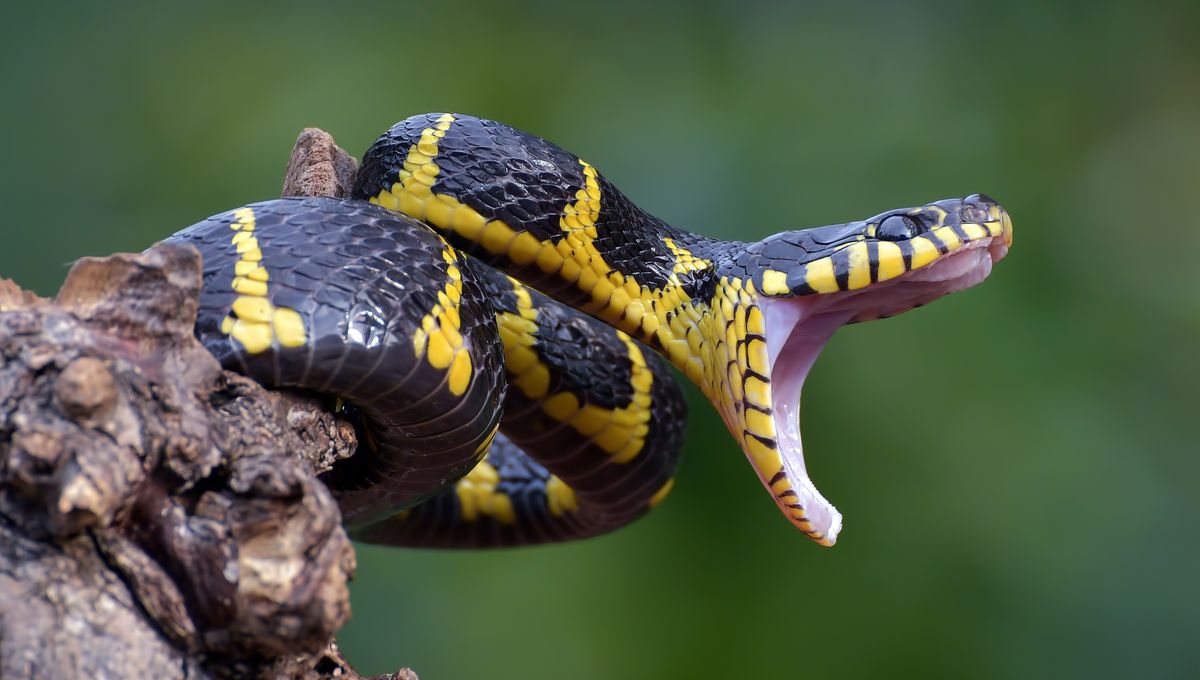
Whether they give you the ick or not, snakes are amazing animals. Not only is their physiology something to marvel at, but their sheer diversity is incredible. There are nearly 4,000 species of different snakes on the planet, which accounts for over 10 percent of terrestrial vertebrates. Their evolution has given rise to an enormous variety of feeding habits, which are often specialized and different from other creatures, such as lizards.
However, the roots of this dietary diversity are not well understood, especially in relation to the earliest days of snake evolution.
But two researchers once examined the deep past of these slithering reptiles and found that the mass extinction of the dinosaurs marked a dramatic turning point. The ecological niches left empty by their dead counterparts were quickly filled by snakes, which rapidly evolved to tackle all sorts of prey.
Snakes are rarely preserved in the fossil record, which is one reason why their early evolution is less understood. To get around this Michael Grundler, a postdoctoral researcher at the University of California, and his colleague Daniel Rabosky, of the University of Michigan, examined living species of snake to explore their past.
They collected over 34,000 publicly available reports on snake diets from 882 species which were based on encounters with wild animals in the field or dissected and preserved museum specimens. They then used genetic information taken from modern snakes to develop a family tree for these limbless reptiles.
“With those two pieces of information we can make inferences about what extinct species might have looked like long ago,” Grundler told Popular Science.
They then used an inference mathematical model to reconstruct the speed at which ancient snakes may have changed as their diets expanded.
“We find that after an initial shift away from eating invertebrates, the diversity of snake feeding habits increased rapidly after the K-Pg boundary,” the authors wrote in their study, published in PLOS Biology in 2021.
The K-Pg boundary, otherwise known as the Cretaceous-Paleogene boundary, marks the point where the Cretaceous Period ended, which is also the time when dinosaurs went extinct.
After this extinction event, there was a rapid explosion in dietary diversity which led to the wide range of eating styles among snakes that we see today.
The results showed how “evolutionary fortunes” can be shaped by the disappearance of competitors, along with the rise of prey species, such as rodents, birds, fish, amphibians, invertebrates, and other reptiles, in the case of snakes.
“Our results indicate that repeated transformational shifts in dietary ecology are important drivers of adaptive radiation in snakes and provide a framework for analyzing and visualizing the evolution of complex ecological phenotypes on phylogenetic trees”, the authors wrote.
Despite the power of these findings, the team acknowledged that the 882 species they examined represent less than a quarter of living snake diversity. Moreover, half of the species in the dataset are represented by only 12 or fewer observations. As such, more work is needed in the future.
“Our results call attention to this deficit and highlight a critical need to gather more natural history data to help advance our understanding of how complex ecological traits evolve.”
Source Link: The “Age Of Snakes” – How Dinosaur Mass Extinction Let Snakes Feast On New Diverse Diets